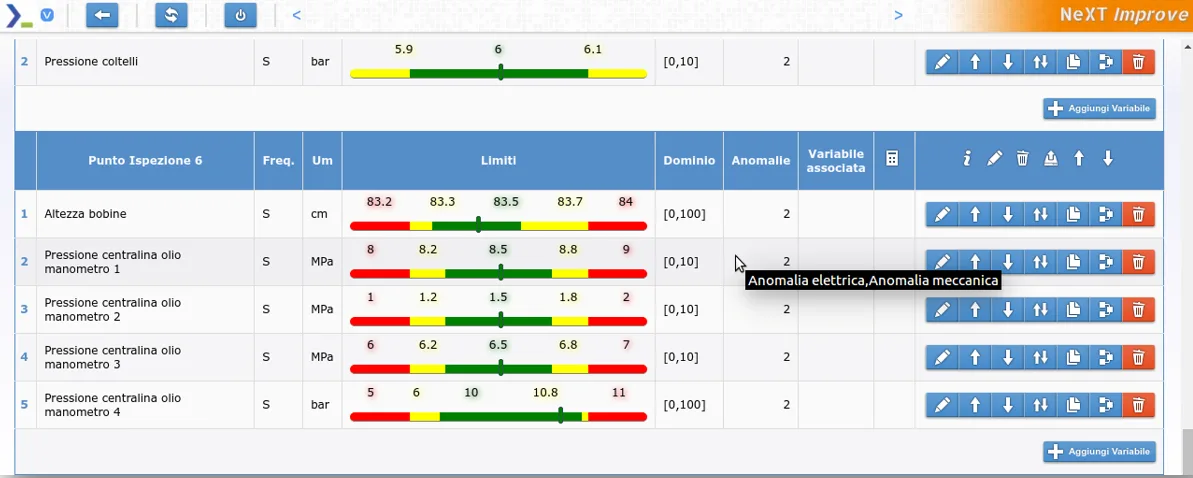
Configurazione delle variabili
Il responsabile di processo può definire le variabili delle carte di controllo, cioè definire il concetto di fuori controllo.
Le possibili oscillazioni di ciascuna variabile vengono indicate dai colori. Questi corrispondono alla diversa idoneità dei parametri stabiliti dal responsabile di processo.
Le zone rosse stanno ad indicare dei valori negativi che vanno ad inficiare la qualità del prodotto o altri aspetti del processo produttivo.

Tecniche statistiche
Per ogni variabile è possibile redigere la carta di controllo con i suoi valori nel tempo. Sarà dunque possibile verificare visivamente eventuali fuori controllo (OOC).
Dopo aver creato le carte di controllo, si procederà a definire le cause di fuori controllo e del flusso di azioni correttive: uno di questi strumenti è l’OCAP (Out of Control Action Plan), un diagramma di flusso che contiene la serie di operazioni da seguire per poter gestire un fuori controllo.
Con l’aiuto invece del diagramma di Pareto saremo in grado di individuare le cause che incidono maggiormente sul fenomeno in esame e, quindi, di valutare su basi oggettive le priorità di intervento nella soluzione dei problemi.
Infine, il diagramma causa/effetto (o diagramma di Ishikawa) viene usato come strumento per individuare le cause, cioè le relazioni tra una caratteristica ed i suoi fattori, e quindi la soluzione del problema.